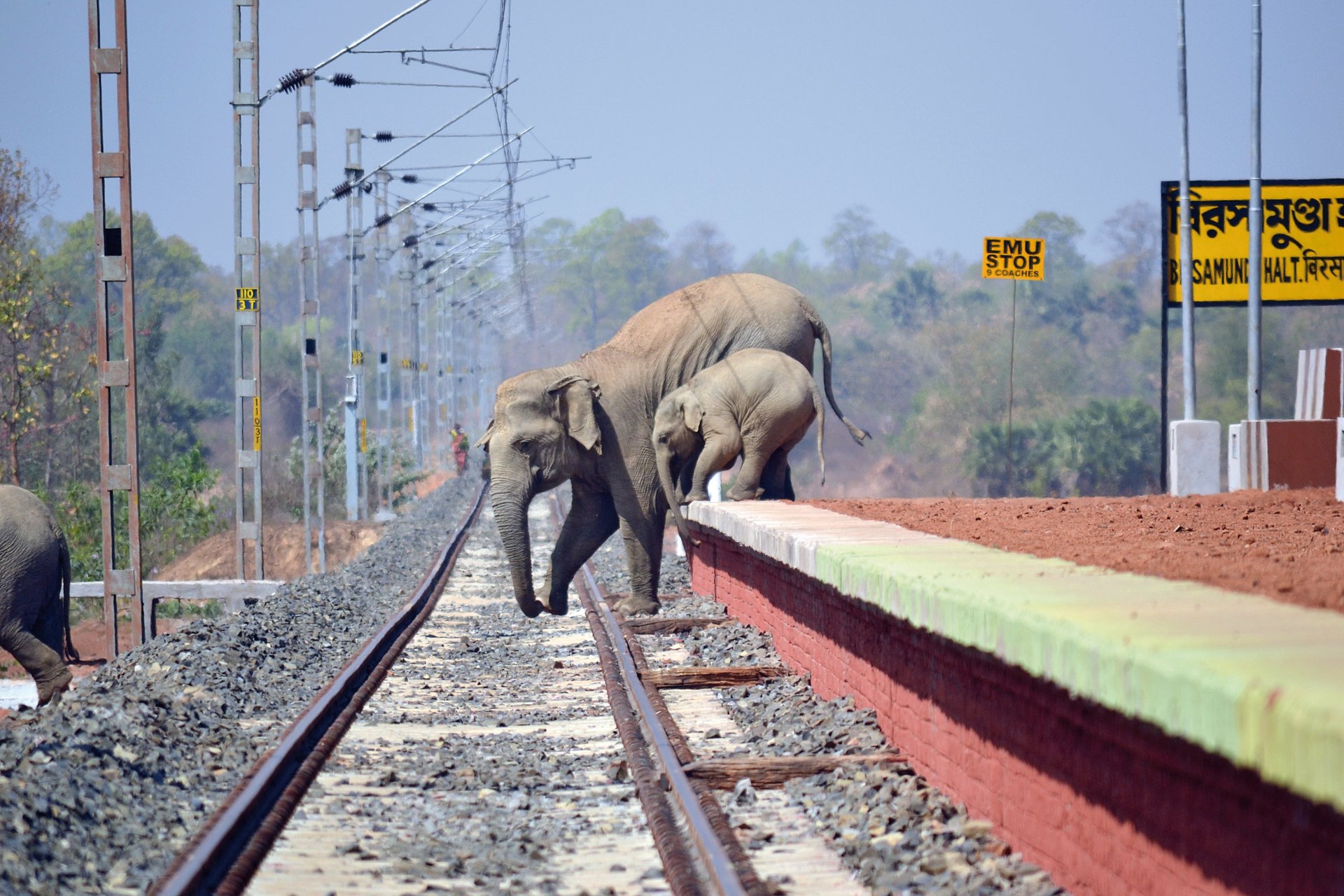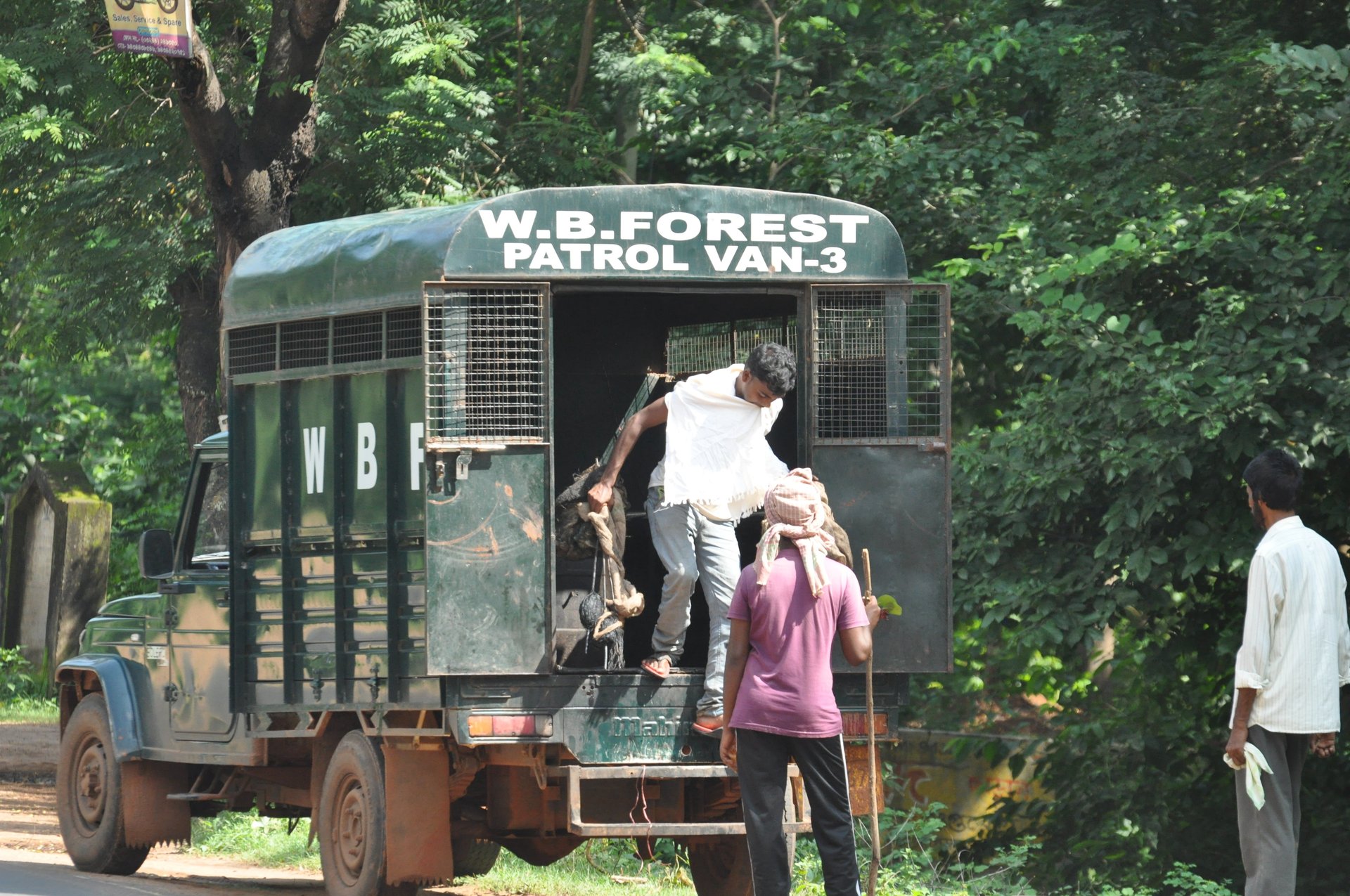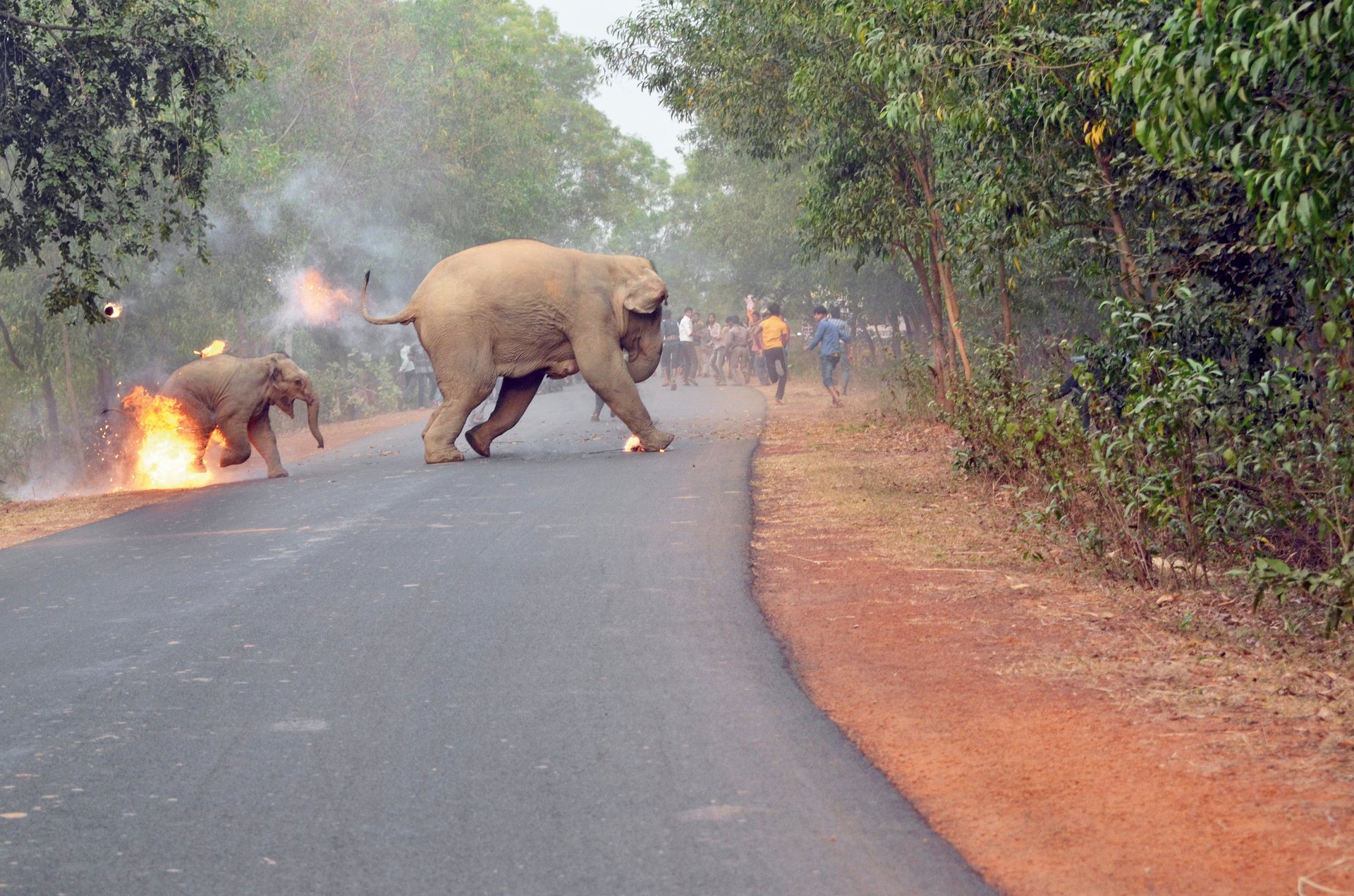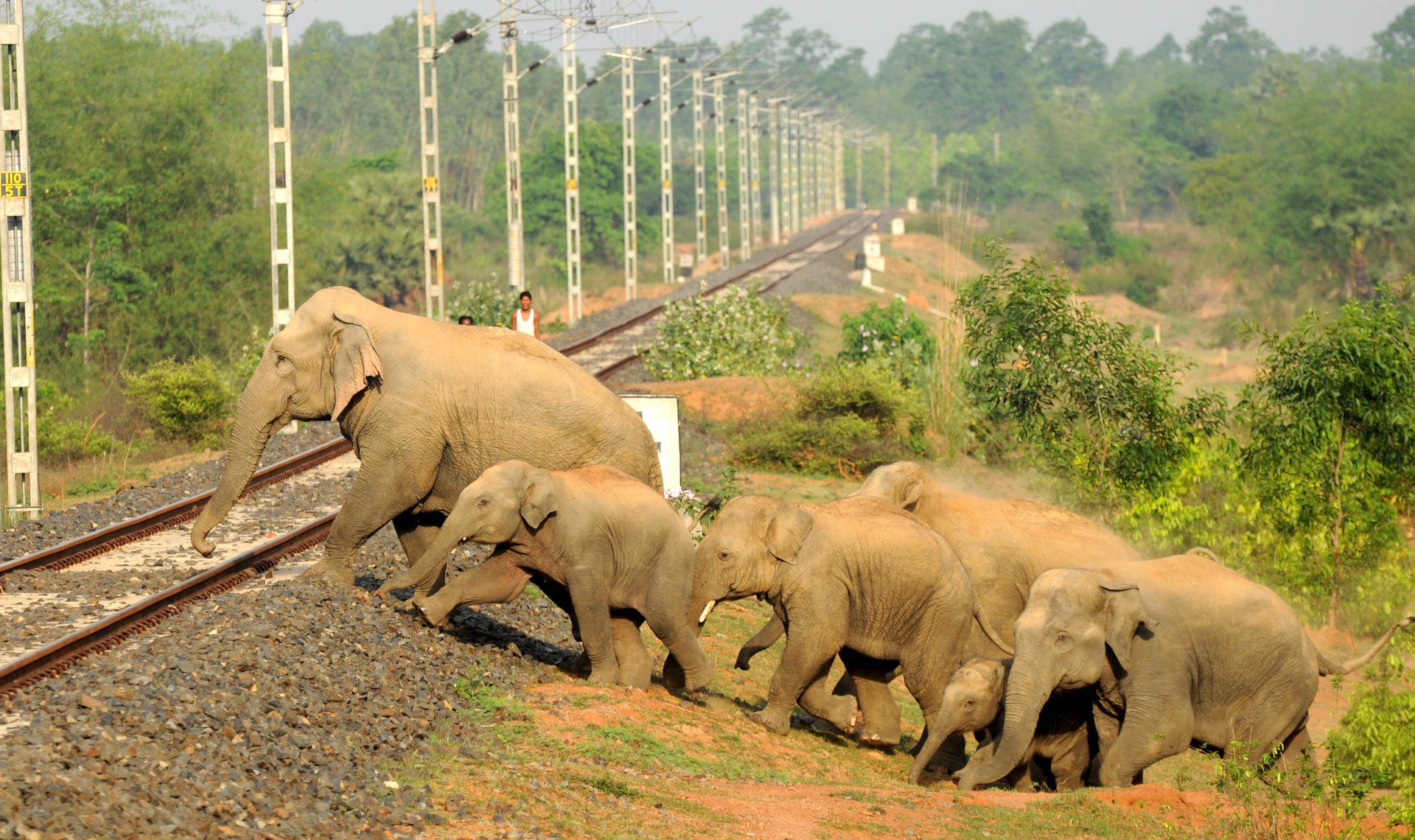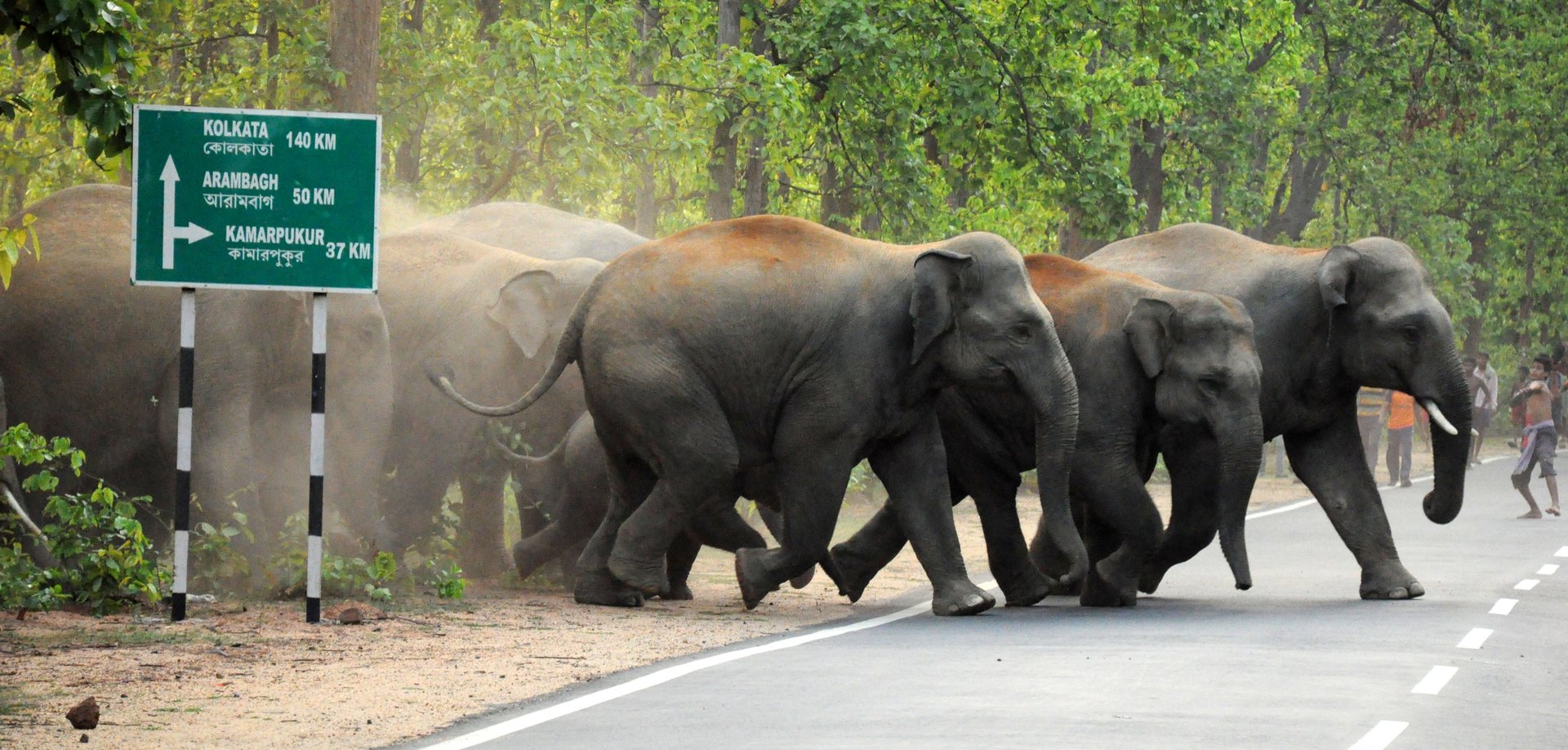A small-town businessman’s quest to protect India’s elephants, one photo at a time
On a winter morning last year, the photographer Biplab Hazra watched as, one by one, a herd of elephants tried to cross a railway track in the town of Bishnupur in West Bengal’s Bankura district. Among them was a calf perched at the edge of the high railway platform, built in the middle of an elephant corridor, struggling to get down.
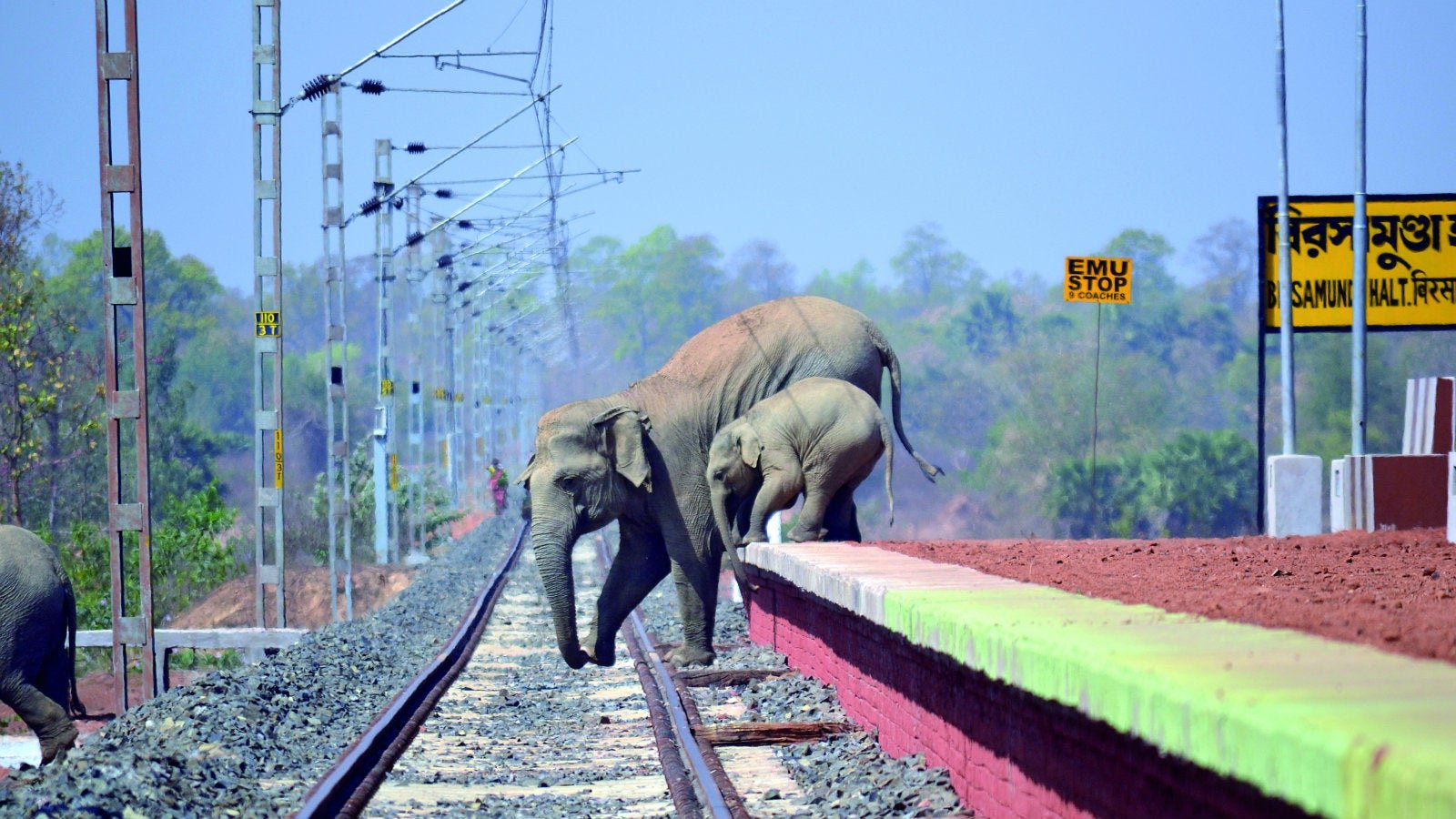

On a winter morning last year, the photographer Biplab Hazra watched as, one by one, a herd of elephants tried to cross a railway track in the town of Bishnupur in West Bengal’s Bankura district. Among them was a calf perched at the edge of the high railway platform, built in the middle of an elephant corridor, struggling to get down.
Hazra’s poignant photograph of that moment won him a certificate of merit in this year’s Sanctuary Asia Wildlife Photography awards. And it comes just a year after his striking photograph of elephants in the same district fleeing from fireballs thrown by villagers went viral around the world. In 2017, Hazra, who owns a brick kiln business, was named the wildlife and conservation magazine Sanctuary Asia’s photographer of the year.
The 40-year-old first began spending time in the forests of the Bankura district in 2000, after which he bought a camera and started taking pictures as a hobby. But over time, he began using his camera to document the escalating human-elephant conflict in the area.
This region of West Bengal has for long been part of the migratory route for elephants, but as the Birsa Munda Halt railway platform shows, human interventions are increasingly challenging the survival of the species.
“…if this platform was built 100 metres in other direction, then the elephant corridor would’ve been saved,” Hazra told Quartz. “…it’s a platform in the middle of the forest, and one train passes through it without stopping… at the ticket counter, the fans, electricity wire, switches, everything has been nicked. Even the gate is missing. Only the platform remains.”
Elephants have a habit of moving from forest to forest, but rapid development has forced the species to adapt, according to Biswajit Mohanty, secretary of the Wildlife Society of Odisha, a state that neighbours West Bengal.
“Earlier they used to migrate to West Bengal and then return (to Jharkhand). But over a period of time, maybe over the last 10 years, the return is not happening for various reasons,” Mohanty told Quartz. Chief among them are the construction of a canal system, mining and other industrial activities, besides expanded human settlements and cultivation. As a result, Mohanty says, the feeding habits of elephants have also evolved, and they now like to eat the cash crops of sugarcane and potatoes grown year-round by the farmers in the region.
And this is what sparks the human-elephant conflict.
“The villagers are desperate to get rid of elephants because first of all the per acre compensation for damage (in West Bengal) is much lower than in other states,” Mohanty explained. “They try to throw those fireballs; they have steel rods dipped in kerosene and they have got a pointed tip and sometimes they poke the elephants when they come close.” Over the last five to six years, he added, elephants have also been increasingly driven into Odisha, which never used to happen before.
For Hazra, photography has become an essential tool to raise awareness of the issue, and Mohanty acknowledges that his images have started to make a difference. Last year, India’s supreme court deemed the practice of using spikes and fireballs to chase away elephants “barbaric” and ordered forest departments to stop immediately.
“Previously, everyone would be armed with these. Nowadays, maybe one in 100 people uses these fireballs,” Hazra said.
But the most important step for elephant conservation is to protect their traditional habitat.
“The way forward is to restore their migratory route so that they don’t have to forcibly stay in an area where they don’t normally stay,” Mohanty said. “Corridors have to be pushed back to what they were. (But) right now, there’s very little happening on that front.”
So Hazra continues to take his photos.
“These animals have to be saved. That’s why I take photographs….I want to be able to capture their suffering, and hopefully things can be improved legally,” he said.
Here are some of Hazra’s photographs that document the challenges of West Bengal’s elephant population:
